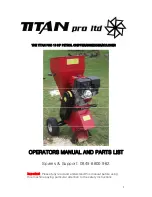
ARTC-SVX001B-EN
59
Table 11.
Interface panel diagnostic code key (continued)
ALARM
RESET
ACTION
System Hot LWT too low
Auto
Warning
UI1 sensor failure
Auto
Shuts down circuit 1 if Low Pressure sensor selected for Suction
Pressure Alarm
UI2 sensor failure
Auto
Shuts down Circuit 1
UI3 sensor failure
Auto
Shuts down local cooling control if Module is in Stand-alone Mode and
respective Entering / Leaving Water sensor selected for Temperature
Control
UI4 sensor failure
Auto
Locks out module
UI5 sensor failure
Auto
Shuts down local heating control if Module is in Stand-alone Mode and
respective Entering / Leaving Water sensor selected for Temperature
Control
UI6 sensor failure
Auto
Shuts down Free Cooling control if Module is in Stand-alone Mode and
respective Entering / Leaving Water sensor selected for Temperature
Control
UI7 sensor failure
Auto
Modules switch into Stand-alone Mode if both respective Cooling /
Heating Mode selected and respective Entering / Leaving Water sensor
selected for Temperature Control
UI8 sensor failure
Auto
Modules switch into Stand-alone Mode if both respective Cooling /
Heating Mode selected and respective Entering / Leaving Water sensor
selected for Temperature Control
UI9 sensor failure
Auto
Modules switch into Stand-alone Mode if both respective Cooling /
Heating Mode selected and respective Entering / Leaving Water sensor
selected for Temperature Control
UI10 sensor failure
Auto
Modules switch into Stand-alone Mode if both respective Cooling /
Heating Mode selected and respective Entering / Leaving Water sensor
selected for Temperature Control
UI11 sensor failure
Auto
Control panel heating / cooling control is disabled
UI12 sensor failure
Auto
Warning
Wrong local rotation control parameters
Auto
Warning
Wrong primary rotation control parameters
Auto
Warning
Wrong temperature control parameters
Auto
Warning
Compressor Diagnostic Codes
Copeland compressors used in Trane chillers are highly
automated with digital capability to record and report a
range of operating parameters and critical events. This
technology can be employed to assist in
troubleshooting compressor faults and potential
corrective action.
CoreSense Flash Codes
The CoreSense technology in the Copeland
compressor will communicate an abnormal system
condition through a unique flash code:
A
AL
LE
ER
RT
T L
LE
ED
D ((Y
Ye
ellllo
ow
w)):: The ALERT LED will flash a
number of times consecutively, pause and then repeat
the process. The number of consecutive flashes,
defined as the flash code, correlates to a specific
anomaly or abnormal condition.
T
TR
RIIP
P//L
LO
OC
CK
K L
LE
ED
D ((R
Re
ed
d)):: indicates either a TRIP or LOCK
condition.
•
T
TR
RIIP
P is indicated by a solid illumination of the LED.
This means the compressor is not running and
demand is present at the module.
•
L
LO
OC
CK
K is indicated by a flashing LED correlating to a
lock condition in which the module will prevent the
compressor from starting.
CoreSense Flash Code Description
Copeland compressors will report a range of flash
codes when specific critical events occur. See
.
C
CO
OD
DE
E 1
1 – Long Run Time: The module will flash yellow
one time when the compressor operates for longer
than 18 continuous hours. This is an alert code only
and the module will not lockout the compressor for this
condition. (This code is inactive for heat pumps.)
C
CO
OD
DE
E 2
2 – Compressor (Pressure) Trips: The module
will flash yellow two times when the compressor
operates from 12 seconds to 15 minutes followed by a
















































